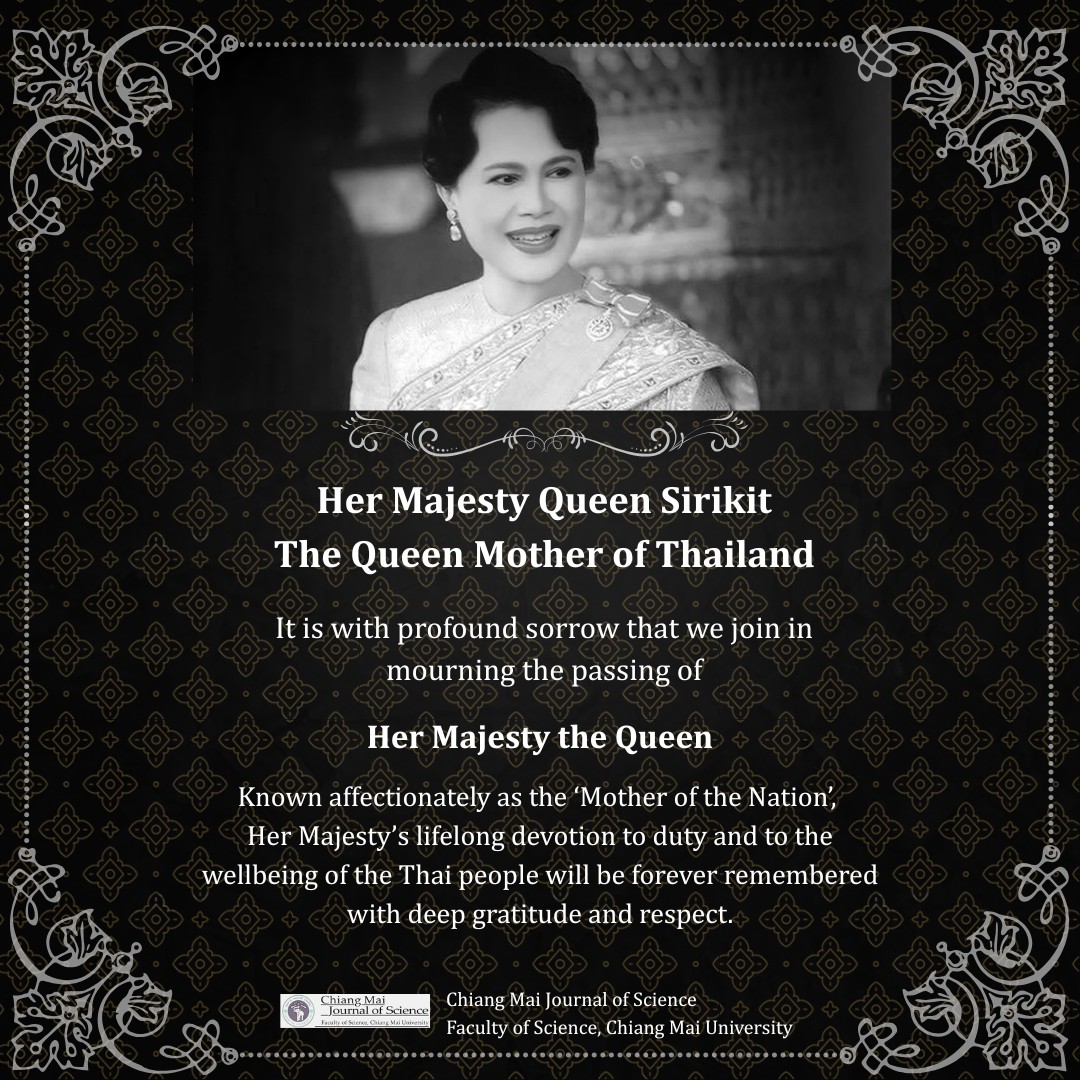JOURNAL DETAIL
Enhancement of Superfine Bacterial Nanocellulose Production in Coconut Water at High Temperature by the Adapted Strains of Komagataeibacter oboediens MSKU 3
Paper Type |
Contributed Paper |
Title |
Enhancement of Superfine Bacterial Nanocellulose Production in Coconut Water at High Temperature by the Adapted Strains of Komagataeibacter oboediens MSKU 3 |
Author |
Tanawan Sukkasem, Uraiwan Tippayasak, Pornchanok Taweecheep, Duenrut Chonudomkul and Gunjana Theeragool |
Email |
fscignt@ku.ac.th |
|
Abstract: A cost-effective strategy for superfine bacterial nanocellulose (BNC) production was successfully developed by the low-nutrient adaptive mutation. Two adapted strains, RC30-15 and RC37-23 were obtained from revertant strain R37-9 of Komagataeibacter oboediens MSKU 3 by a repetitive static cultivation at 30°C and 37°C, respectively. The repetitive cultivation was carried out in coconut water (CW) containing 1% acetic acid and 2% ethanol (CW1A2E), CW1A2E containing 0.5% sucrose (CW1A2E0.5S) and CW1A2E0.5S containing 0.5% ammonium sulfate (CW1A2E0.5S0.5N) for 30 passages (210 days). Strain R37-9 produced relatively low amount of superfine BNC of 0.71, 0.88 and 0.82 g/L dry weight after 7 days static cultivation at 37°C in CW1A2E, CW1A2E0.5S and CW1A2E0.5S0.5N, respectively. Two adapted strains exhibited higher BNC producing ability in coconut water than strain R37-9. Strains RC30-15 and RC37-23 produced the highest BNC yields of 3.63 and 8.22 g/L dry weight in CW1A2E0.5S and CW1A2E0.5S0.5N under static cultivation at 30°C and 37°C, respectively. SEM images of the nanofibrils produced from strain RC37-23 showed the finer nanocellulose fibrils and narrower range (24±0.47-34±0.81 nm) of fibril width compared with other strains. Furthermore, the density, moisture content and porosity of nanocellulose fibrils produced from strain RC37-23 in CW1A2E0.5S0.5N medium at 37°C exhibited the highest density (0.86±0.02 g/cm3) and moisture content (12.51±1.87 %). BNC from strain RC37-23 grown in CW1A2E0.5S0.5N medium at 37°C also possessed the lowest porosity (42.59±1.70%). It could be concluded that low-nutrient adapted strain at 37°C, strain RC37-23, produced not only the highest amount of BNC but also the better physicochemical properties of nanocellulose fibrils. |
|
Start & End Page |
999 - 1012 |
Received Date |
2022-01-29 |
Revised Date |
2022-02-28 |
Accepted Date |
2022-03-01 |
Full Text |
Download |
Keyword |
superfine bacterial nanocellulose, Komagataeibacter oboediens, low-nutrient adaptation, coconut water, high temperature fermentation |
Volume |
Vol.49 No.4 (July 2022) |
DOI |
https://doi.org/10.12982/CMJS.2022.060 |
Citation |
Sukkasem T., Tippayasak U., Taweecheep P., Chonudomkul D. and Theeragool G., Enhancement of Superfine Bacterial Nanocellulose Production in Coconut Water at High Temperature by the Adapted Strains of Komagataeibacter oboediens MSKU 3, Chiang Mai Journal of Science, 2022; 49(4): 999-1012. DOI 10.12982/CMJS.2022.060. |
| View:1,733 Download:518 | |
Copyrights © Since 2021 All Rights Reserved by Chiang Mai Journal of Science










